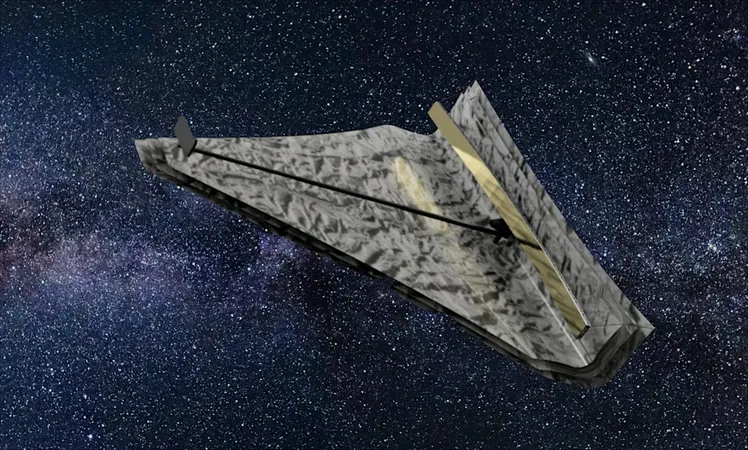
Could This Innovative Rectangular Telescope Be the Breakthrough in Discovering Earth 2.0?
2025-09-01
Author: Wei
Revolutionizing the Search for Earth-like Exoplanets
In a groundbreaking study, researchers are proposing that a new type of telescope—rectangular rather than the traditional circular design—could be the missing link in our quest to find planets resembling Earth. This visionary design could enable us to identify nearby Earth-like exoplanets orbiting sun-like stars.
Heidi Newberg, an astrophysics professor at Rensselaer Polytechnic Institute, highlights that their proposed telescope would be roughly the same size as the James Webb Space Telescope (JWST) but feature a mirror measuring one by twenty meters (around 65.6 by 3.3 feet), whereas JWST has a 6.5 meter (21.3 feet) circular mirror.
The Quest for Imaging Earth-size Planets
The upcoming National Academies' Astronomy and Astrophysics Decadal Survey places a high priority on developing a new space telescope capable of imaging Earth-size planets within the habitable zones of sun-like stars. Although current designs suggest a circular mirror with a required diameter of at least 8 meters (26 feet)—larger than the already impressive JWST—there may be a more efficient solution.
Why Size Matters: The Challenge of Detection
To capture images of planets rich in water vapor, telescopes need to be fine-tuned for detecting light at a specific infrared wavelength of around 10 microns. While JWST’s Mid-Infrared Instrument (MIRI) detects water vapor on large exoplanets, its segmented mirror is insufficient for distinguishing smaller Earth-like bodies in the habitable zones due to their extreme faintness.
According to the Rayleigh criterion, to resolve an Earth-sized planet from a distance of 30 light-years would necessitate a telescope aperture nearing 20 meters (65.6 feet). Creating such a colossal telescope would not only be costly but also a monumental engineering feat.
Small Telescopes vs. Big Dreams
One alternative involves launching multiple smaller telescopes that act collectively as an optical interferometer. However, this would come with its own set of alignment challenges and costs, potentially making this approach impractical with today's technology.
A Game-Changing Telescope Design
Newberg's theory of a large rectangular mirror offers a simpler and more cost-effective solution. By constructing a mirror with dimensions of 65.6 feet by 3.3 feet, it would use all its collecting area to focus on the target exoplanet without wasting any light. Although its area would be slightly smaller than that of the JWST, it would be adeptly oriented to capture the necessary data.
The Potential Treasure Trove of Nearby Stars
In our cosmic neighborhood of 32.6 light-years, there are approximately 69 sun-like stars available for exploration as well as about 300 cooler M dwarf stars. Newberg's research indicates that this innovative telescope design could potentially identify half of the existing Earth-like planets orbiting sun-like stars within just three years. With an estimated one Earth-like planet per sun-like star, this could result in the discovery of about 30 promising candidates for further study.
In conclusion, the journey to uncover our cosmic twin may hinge on embracing new technologies and unconventional designs, like this revolutionary rectangular telescope.



 Brasil (PT)
Brasil (PT)
 Canada (EN)
Canada (EN)
 Chile (ES)
Chile (ES)
 Česko (CS)
Česko (CS)
 대한민국 (KO)
대한민국 (KO)
 España (ES)
España (ES)
 France (FR)
France (FR)
 Hong Kong (EN)
Hong Kong (EN)
 Italia (IT)
Italia (IT)
 日本 (JA)
日本 (JA)
 Magyarország (HU)
Magyarország (HU)
 Norge (NO)
Norge (NO)
 Polska (PL)
Polska (PL)
 Schweiz (DE)
Schweiz (DE)
 Singapore (EN)
Singapore (EN)
 Sverige (SV)
Sverige (SV)
 Suomi (FI)
Suomi (FI)
 Türkiye (TR)
Türkiye (TR)
 الإمارات العربية المتحدة (AR)
الإمارات العربية المتحدة (AR)